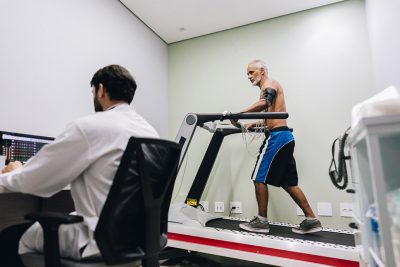By Michael H. Crawford, MD, Editor
Synopsis: A UK National Health Service database study of stress echocardiography has shown the degree of ischemia accurately predicts the risk of future cardiovascular events over five years. The same study also showed that a negative test in patients without a history of cardiac disease identifies patients with no more than the expected background risk of an event for patients in this demographic for five years.
Source: Woodward W, Johnson CL, Krasner S, et al. Long-term outcomes after stress echocardiography in real world practice: Five-year follow-up of the UK EVAREST study. Eur Heart J Imaging. 2024; Nov 12. doi: 10.1093/ehjci/jeae291/7896313. [Online ahead of print].
The Echocardiography: Value and Accuracy at Rest and Stress (EVAREST) study includes data from the British Society of Echocardiography National Review of Stress Echocardiography Practice (BSE-NSTEP), a multicenter, observational study of the use, performance, and accuracy of stress echocardiography in real-world practice in 32 National Health Service (NHS) hospitals in the United Kingdom. Stress echocardiography was performed according to the individual hospital protocols, as was patient management. Long-term follow-up data were obtained from the NHS in patients who consented to a 10-year follow-up.
After excluding patients with incomplete data, 5,503 patients who had a median follow-up duration of 829 days (median age 66 years, 59% men) were enrolled. Dobutamine stress was the most common (64%), then exercise (treadmill 28%, bicycle ergometer 7%), then pacemaker (< 1%). Also, atropine (29%) and echo contrast (79%) were frequently given. Resting wall motion abnormalities were present in 14% of the studies and were significantly associated with positive tests (odds ratio, 3.95; 95% confidence interval [CI], 3.27-4.77; P < 0.001).
During follow-up, in those with a positive stress echo 6% died and in those with a negative stress echo 4% died. Cardiac death occurred in < 1.0% of those with a negative stress echo and in 2% of those with a positive stress test.
Although there was a significant association between positive tests and all-cause and cardiac deaths, if other risk factors were considered on multivariable analysis, this significance was lost. However, on multivariable analysis, a positive test was associated with myocardial infarction (MI) (hazard ratio, 2.71; 95% CI, 1.73-4.24; P < 0.001) and this association was stronger the more left ventricular (LV) wall segments were abnormal with stress.
The event-free survival curve for a negative stress test showed a < 1% rate of MI or death per year in those with no prior history of coronary artery disease (CAD), which translates to < 5% at five years, which is similar to the background risk rate in this demographic.
In those with a history of prior CAD, a negative stress test is associated with a 1.5% per year rate of death or MI, and the curve rose above 5% at four years. The authors concluded that in a real-world practice setting, the degree of ischemia on stress echo accurately predicts the risk of future cardiovascular (CV) events over five years and a negative stress echo in patients without known CAD predicts a risk of CV events at a rate no higher than the background rate for five years.
Commentary
Current guidelines suggest that a negative stress echo has a one-year warranty, but a normal computed tomography angiogram has a two-year warranty. The UK EVAREST study demonstrates that stress echo in subjects without known CAD has a five-year warranty, and in those with known CAD, a four-year event-free period. Also, a positive stress echo is predictive of subsequent MI but not death. In addition, abnormal resting LV wall motion abnormalities are an independent predictor of MI. Thus, stress echo probably provides incremental prognostic data beyond coronary artery anatomy.
There are limitations to the UK EVAREST study. There are no data on pharmacologic therapy in their patients. Events that occurred outside the NHS are not captured. UK NHS data may not apply to other health systems. EVAREST included more than one type of stress (dobutamine, treadmill, bicycle), and the majority received dobutamine.
The majority of patients entered were from South America, so the data may not apply to other groups. Echo imaging is undoubtedly better with dobutamine compared to exercise where the patient is either moving or breathing hard. However, almost 80% of their patients had echo contrast administered to sharpen the definition of the LV endocardium.
Prior studies have shown the accuracy of stress echo for predicting the presence of CAD as defined by invasive angiography, which has led to classifying stress echo as a first-line option for evaluating patients with chest pain. The UK EVAREST study supports this recommendation in a real-world practice setting in multiple centers in several countries.
Michael H. Crawford, MD, is Professor of Medicine and Consulting Cardiologist, University of California Health, San Francisco.
A UK National Health Service database study of stress echocardiography has shown the degree of ischemia accurately predicts the risk of future cardiovascular events over five years. The same study also showed that a negative test in patients without a history of cardiac disease identifies patients with no more than the expected background risk of an event for patients in this demographic for five years.
Subscribe Now for Access
You have reached your article limit for the month. We hope you found our articles both enjoyable and insightful. For information on new subscriptions, product trials, alternative billing arrangements or group and site discounts please call 800-688-2421. We look forward to having you as a long-term member of the Relias Media community.

